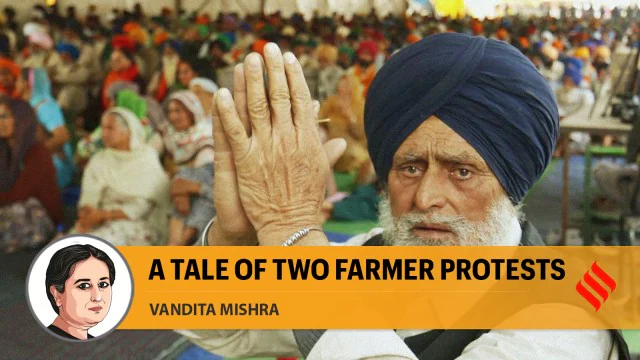The Punjab farmer protest recently has once again brought into focus the changing political and social topography of the state. While the 2020-21 protest was fruitful and resulted in the withdrawal of the three controversial farm laws, the 2024 protest demanding a legal assurance on Minimum Support Price (MSP) did not culminate in a concrete outcome. This difference in outcome indicates deeper transformation in the dynamics of leadership, popular backing, and political participation within the farmer struggle.
The 2020–21 protest witnessed record unity among farmer unions under the Samyukt Kisan Morcha (SKM). The protest was characterized by tactical coordination and widespread public support, which put pressure on the central government to roll back the farm laws. The protest sites around Delhi became symbols of resistance and solidarity, garnering support from all over India and even globally. The government’s eventual rollback of the laws was viewed as a rare triumph for grassroots mobilization.
Compared to the past, the 2024 protest laid bare farmer union internal splits. As much as the call for MSP continues to be at the core of farmers’ economic protection, fractured leadership and insufficient common strategy undermined the effectiveness of the protest. The political response by the state was also different. The AAP government in Punjab, led by the AAP, was criticized for its response, with farmers blaming it for failing to represent their interests strongly on the national stage.
Moreover, the shifting political alliances and growing distrust between farmers and political parties further complicated the movement’s trajectory. Unlike the previous protest, which maintained a non-partisan stance, the recent agitation witnessed political undertones, with various parties attempting to influence the narrative. This muddied the protest’s core message and diluted its effectiveness.
The contrasting outcomes underscore the changing nature of farmer politics in Punjab. While the protest of 2020–21 showed the strength of an united front, the agitation of 2024 illustrates the failure of maintaining momentum in times of political disaggregation and leadership crisis. In the future, the success of farmer unions in recovering trust and unity will decide the destiny of agrarian agitations in India.
The farming movement is still a strong force politically in Punjab, but to succeed, it would need to overcome internal fissures and handle the complicated game of state-central government relationships.









